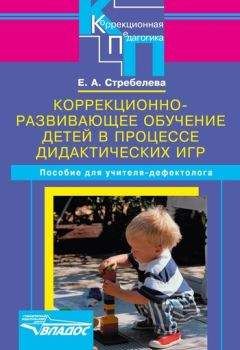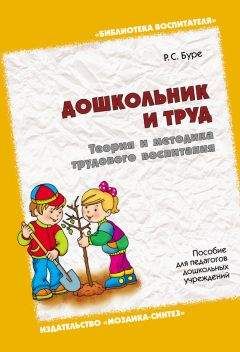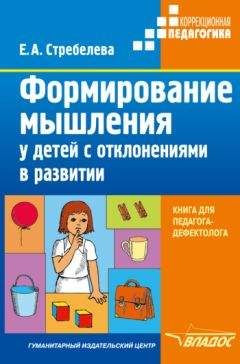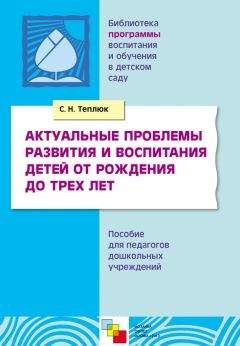Роб Найт - Смотри, что у тебя внутри. Как микробы, живущие в нашем теле, определяют наше здоровье и нашу личность
131
G. D. Wright, “Mechanisms of Resistance to Antibiotics,” Current Opinion in Chemical Biology 7, no. 5 (October 2003): 563–69.
132
V. J. Paul et al., “Antibiotics in Microbial Ecology: Isolation and Structure Assignment of Several New Antibacterial Compounds from the Insect-Symbiotic Bacteria Xenorhabdus Spp,” Journal of Chemical Ecology 7, no. 3 (May 1981): 589–97.
133
“Use of Antimicrobials Outside Human Medicine and Resultant Antimicrobial Resistance in Humans,” World Health Organization, accessed October 12, 2014, http://web.archive.org/web/20040513120635/, http://www.who.int/mediacentre/factsheets/fs268/en/index.html.
134
R. M. Lowe et al., “Escherichia Coli O157: H7 Strain Origin, Lineage, and Shiga Toxin 2 Expression Affect Colonization of Cattle,” Applied Environmental Microbiology 75, no. 15 (August 2009): 5074–81.
135
I. Cho et al., “Antibiotics in Early Life Alter the Murine Colonic Microbiome and Adiposity,” Nature 488, no. 7413 (August 30, 2012): 621–26.
136
Blaser, Missing Microbes.
137
L. Trasande et al., “Infant Antibiotic Exposures and Early-Life Body Mass,” International Journal of Obesity 37, no. 1 (January 2013): 16–23.
138
S. Foliaki et al., “Antibiotic Use in Infancy and Symptoms of Asthma, Rhinoconjunctivitis, and Eczema in Children 6 and 7 Years Old: International Study of Asthma and Allergies in Childhood Phase III,” Journal of Allergy and Clinical Immunology 124, no. 5 (November 2009): 982–89.
139
A. T. Stefka et al., “Commensal Bacteria Protect Against Food Allergen Sensitization,” Proceedings of the National Academy of Sciences of the United States of America 111, no. 36 (September 9, 2014): 13145–50.
140
См. сайт American Gut, www.americangut.org.
141
E. S. Lander et al., “Initial Sequencing and Analysis of the Human Genome,” Nature 409, no. 6822 (February 15, 2001): 860–921.
142
Human Microbiome Project Consortium, “Structure, Function and Diversity.”
143
C. Lozupone and R. Knight, “UniFrac: A New Phylogenetic Method for Comparing Microbial Communities,” Applied and Environmental Microbiology 71, no. 12 (December 2005): 8228–35.
144
Turnbaugh et al., “Core Gut Microbiome in Obese and Lean Twins”; M. Hamady et al., “A Core Gut Microbiome in Obese and Lean Twins,” Nature 457, no. 7228 (January 22, 2009): 480–84.
145
Le Chatelier et al., “Richness of Human Gut Microbiome Correlates with Metabolic Markers.”
146
J. L. Dunne, “The Intestinal Microbiome in Type 1 Diabetes,” Clinical and Experimental Immunology 177, no. 1 (July 2014): 30–37.
147
E. Soyucen et al., “Differences in the Gut Microbiota of Healthy Children and Those with Type 1 Diabetes,” Pediatrics International: Official Journal of the Japan Pediatric Society 56, no. 3 (June 2014): 336–43.
148
M. E. Mejia-Leon et al., “Fecal Microbiota Imbalance in Mexican Children with Type 1 Diabetes,” Scientific Reports 4 (2014): 3814.
149
N. Larsen et al. “Gut Microbiota in Human Adults with Type 2 Diabetes Differs from Non-Diabetic Adults,” PloS One 5, no. 2 (2010): e9085.
150
F. H. Karlsson et al., “Gut Metagenome in European Women with Normal, Impaired and Diabetic Glucose Control,” Nature 498, no. 7452 (June 6, 2013): 99–103.
151
J. Sato et al., “Gut Dysbiosis and Detection of ‘Live Gut Bacteria’ in Blood of Japanese Patients with Type 2 Diabetes,” Diabetes Care 37, no. 8 (August 2014): 2343–50.
152
J. Qin et al., “A Metagenomewide Association Study of Gut Microbiota in Type 2 Diabetes,” Nature 490, no. 7418 (October 4, 2012): 55–60.
153
Frank et al., “MolecularPhylogenetic Characterization of Microbial Community Imbalances.”
154
Tong et al., “Modular Organization of Human Intestinal Mucosal Microbiota and Its Association with Inflammatory Bowel Disease.”
155
E. Li et al., “Inflammatory Bowel Diseases Phenotype, C. Difficile and NOD2 Genotype Are Associated with Shifts in Human Ileum Associated Microbial Composition,” PloS One 7, no. 6 (2012): e26284.
156
D. Gevers et al., “The TreatmentNaive Microbiome in New-Onset Crohn’s Disease,” Cell Host & Microbe 15, no. 3 (March 12, 2014): 382–92.
157
C. Manichanh et al., “Anal Gas Evacuation and Colonic Microbiota in Patients with Flatulence: Effect of Diet,” Gut 63, no. 3 (March 13, 2014): 401–8.
158
Castellarin et al., “Fusobacterium Nucleatum Infection Prevalent in Human Colorectal Carcinoma.”
159
Rubinstein et al., “Fusobacterium Nucleatum Promotes Colorectal Carcinogenesis by Modulating ECadherin/Beta-Catenin Signaling via Its FadA Adhesin.”
160
Kostic et al., “Fusobacterium Nucleatum Potentiates Intestinal Tumorigenesis and Modulates Tumor-Immune Microenvironment.”
161
Warren et al., “Co-occurrence of Anaerobic Bacteria in Colorectal Carcinomas.”
162
Flanagan et al., “Fusobacterium Nucleatum Associates with Stages of Colorectal Neoplasia Development, Colorectal Cancer and Disease Outcome,” 1381–90.
163
Koeth et al., “Intestinal Microbiota Metabolism of L–Carnitine.”
164
Tang et al., “Intestinal Microbial Metabolism of Phosphatidylcholine and Cardiovascular Risk.”
165
Scher et al., “Expansion of Intestinal Prevotella Copri Correlates with Enhanced Susceptibility to Arthritis.”
166
F. H. Karlsson et al., “Gut Metagenome in European Women With Normal, Impaired and Diabetic Glucose Control,” Nature 498, no. 7452 (June 6, 2013): 99–103.
167
J. Qin et al., “A MetagenomeWide Association Study of Gut Microbiota in Type 2 Diabetes,” Nature 490, no. 7418 (Oct. 4, 2012): 55–60.
168
D. Knights et al., “HumanAssociated Microbial Signatures: Examining Their Predictive Value,” Cell Host & Microbe 10, no. 4 (Oct. 20, 2011): 292–6.
169
D. Gevers et al., “The TreatmentNaive Microbiome in New-Onset Crohn’s Disease,” Cell Host & Microbe 15, no. 3 (March 12, 2014): 382–92.
170
H. S. Lee et al., “Biomarker Discovery Study Design for Type 1 Diabetes in the Environmental Determinants of Diabetes in the Young (TEDDY) Study,” Diabetes/Metabolism Research and Reviews 30, no. 5 (July 2014): 424–34.
171
Lee et al., “Proinflammatory T-Cell Responses to Gut Microbiota Promote Experimental Autoimmune Encephalomyelitis.”
172
Berer et al., “Commensal Microbiota and Myelin Autoantigen Cooperate to Trigger Autoimmune Demyelination.”
173
Hsiao et al., “Microbiota Modulate Behavioral and Physiological Abnormalities Associated with Neurodevelopmental Disorders.”
174
C. A. Lozupone et al. “Metaanalyses of Studies of the Human Microbiota,” Genome Research 23, no. 10 (October 2013): 1704–14.
175
Hamady and Knight, “Microbial Community Profiling for Human Microbiome Projects.”
176
Z. Liu et al., “Accurate Taxonomy Assignments from 16S rRNA Sequences Produced by Highly Parallel Pyrosequencers,” Nucleic Acids Research 36, no. 18 (October 2008): e120.
177
Z. Liu et al., “Short Pyrosequencing Reads Suffice for Accurate Microbial Community Analysis,” Nucleic Acids Research 35, no. 18 (September 2007): e120.




